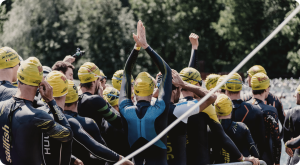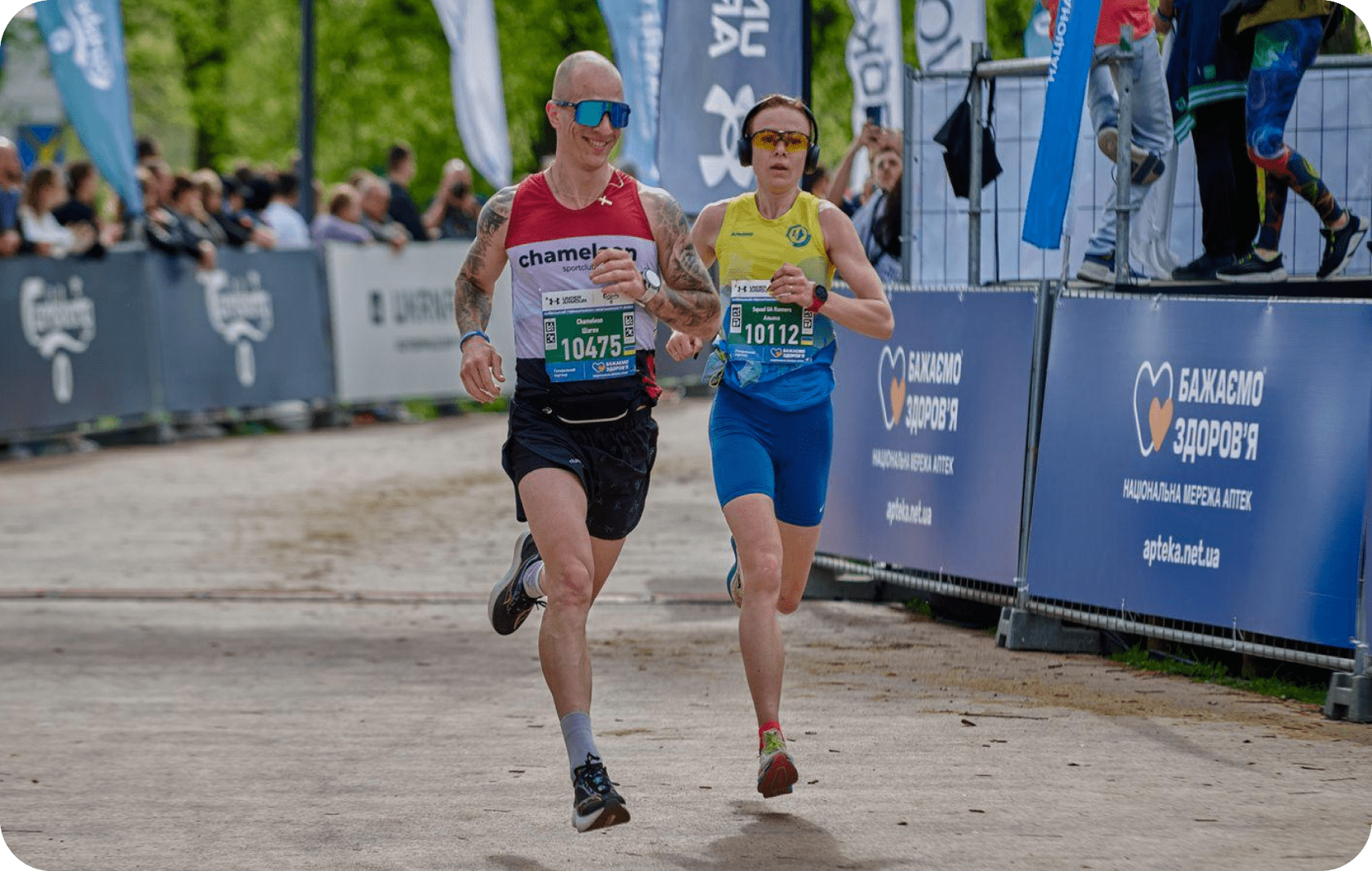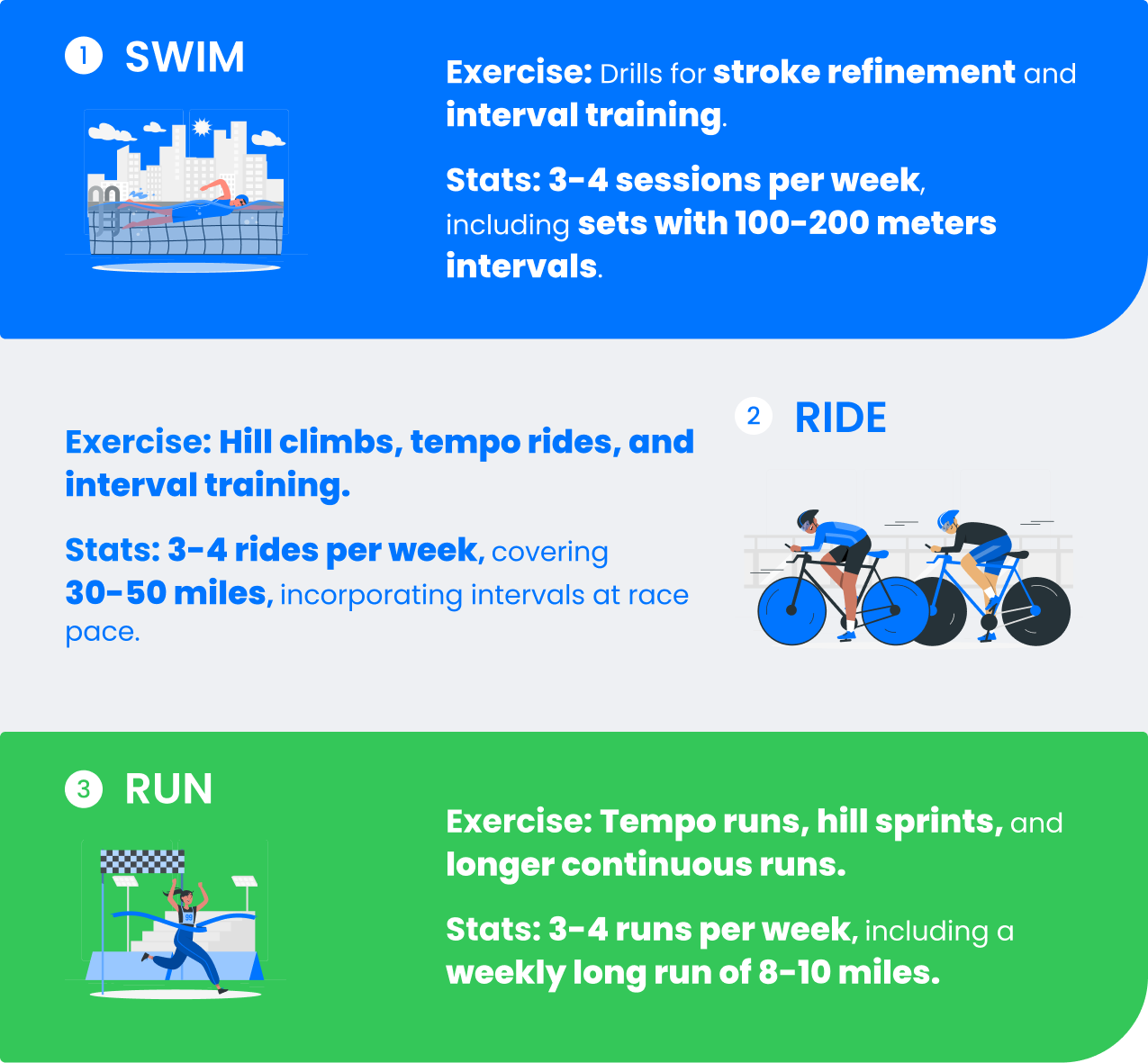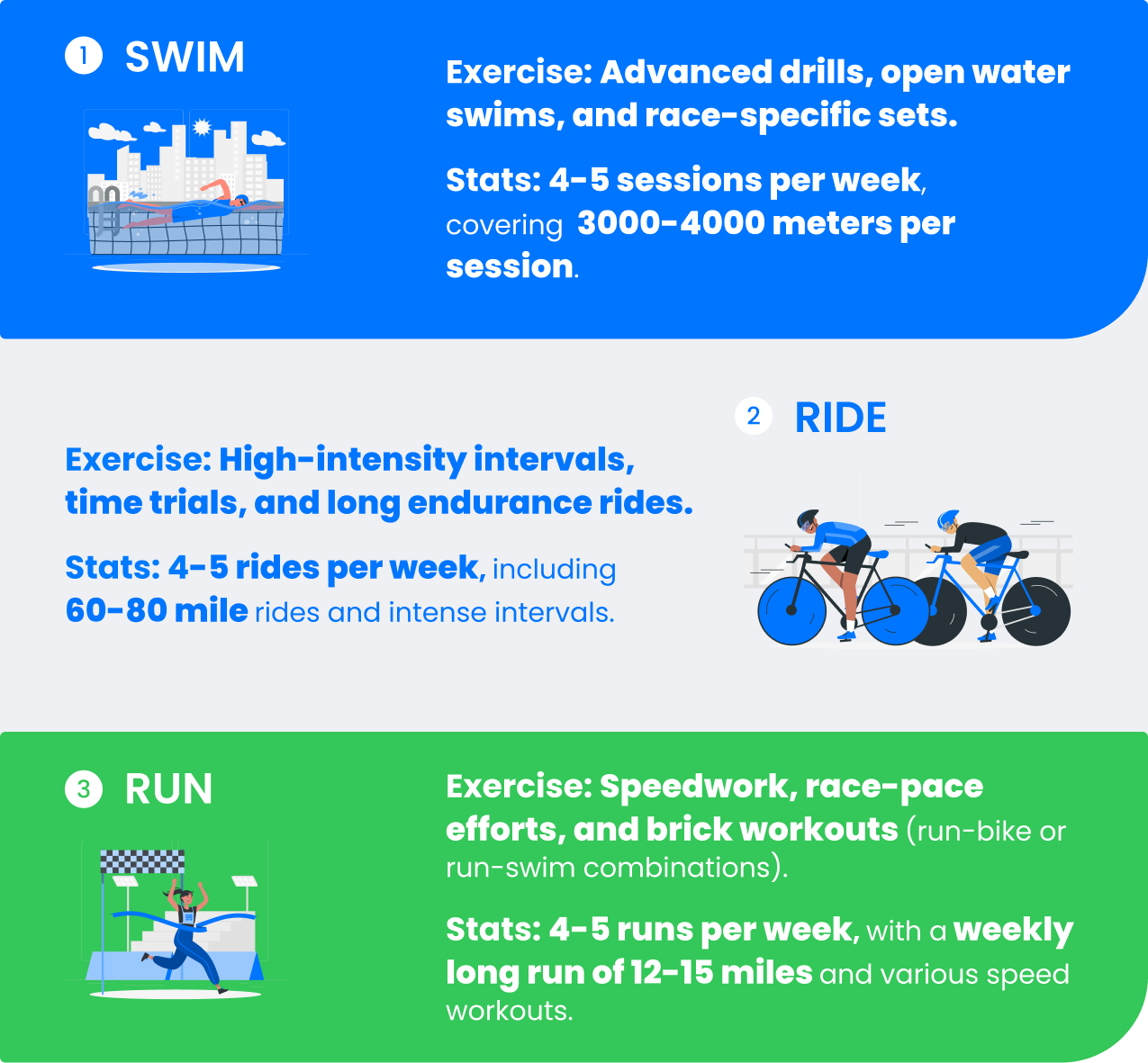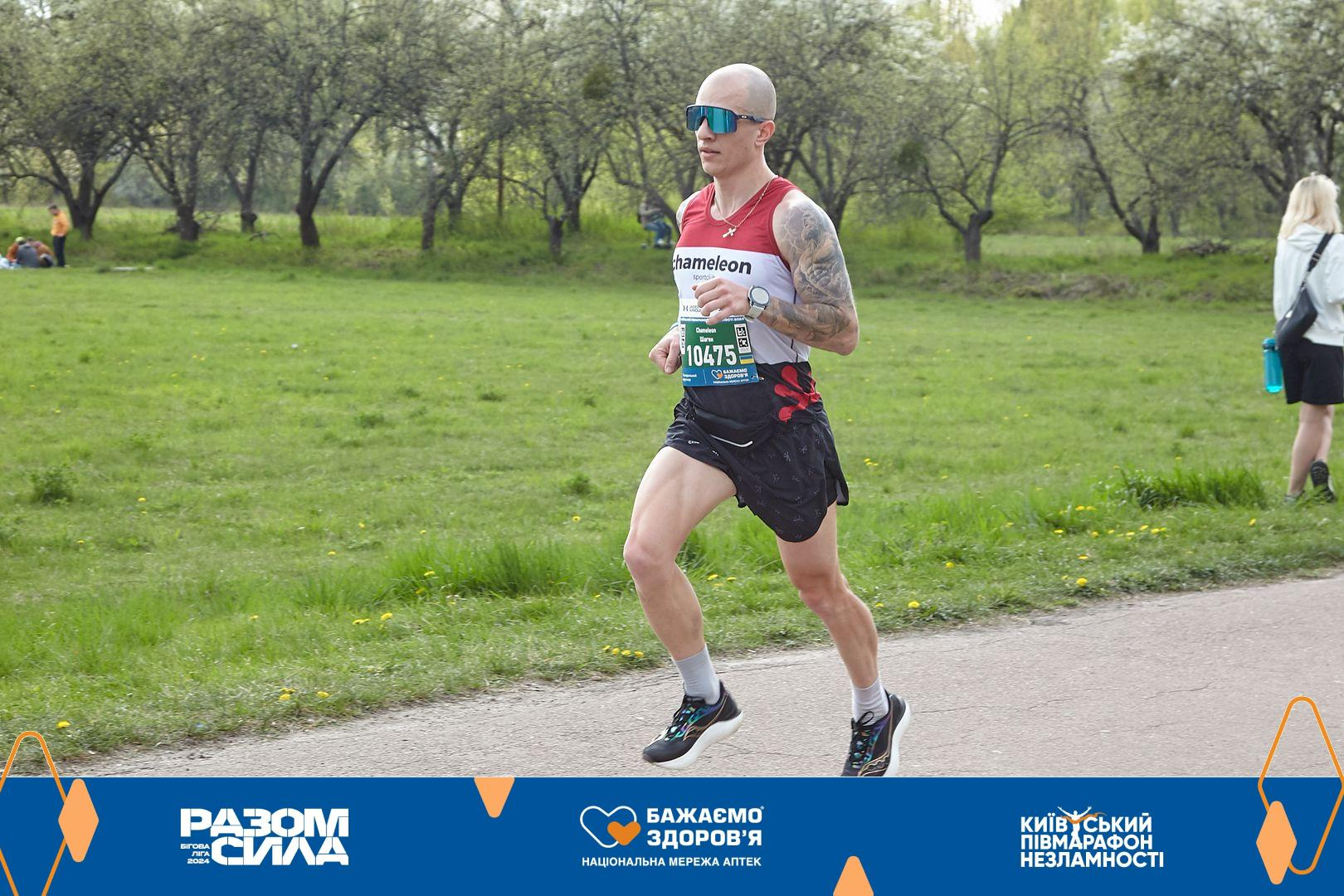Triathlon is an intense and demanding sport where mental toughness, physical strength, and endurance come together to create the ultimate athletic challenge.
Whether you’re an experienced athlete hoping to finish third in an Ironman race or a novice looking to complete your first sprint triathlon sprint, one thing is certain:
A well-organized training plan will guide you along this difficult path.
In this article, we’ll discuss the importance of sticking to a triathlon training plan and offer advice on how to be successful in your training.
Defining the Basics of Triathlon Disciplines
Triathlons are a unique and demanding athletic pursuit that combines three triathlon disciplines: swimming, cycling, and running.
Understanding the nuances of each is vital before you dive into training.
Swimming
This is often the first leg of a triathlon.
Triathletes need to be proficient swimmers, mastering techniques like freestyle, backstroke, and breaststroke.
Swim workouts involve building endurance, improving stroke efficiency, and practicing open-water swimming, which presents its own set of challenges.
The right gear, such as wetsuits and goggles, plays a crucial role in your swimming training.
Bike ride
The second segment in most triathlons, bike leg requires not only physical endurance but also technical expertise.
Riding a triathlon-specific bike, understanding gear shifting, and mastering aerodynamic positioning are key aspects of training.
Long rides, hill climbs, and time trials help build the necessary cycling skills and stamina.
Running
The final leg is a demanding run.
Triathletes should develop running endurance and speed whether they are training for sprint triathlons or for an Olympic distance triathlon.
Your training should include various terrains, from flat pavement to hilly trails.
Proper running form, running shoes, and strategies for transitioning from ride to run are all part of the equation.
Triathlon Training Plan for Beginners
1. Swim
– Exercise: Focus on freestyle technique and building endurance.
– Stats: Aim for 2-3 sessions per week, starting with 500-800 meters and gradually increasing to 1500 meters over several weeks.
2. Ride
– Exercise: Basic cycling skills, bike handling, and building aerobic capacity.
– Stats: Start with 1-2 rides per week, covering 10-15 miles, and gradually progressing to 30-40 miles over time.
3. Run
– Exercise: Run-walk intervals to improve running endurance.
– Stats: Begin with 2-3 runs per week, alternating between running and walking, with total times increasing from 20 minutes to 45 minutes.
Triathlon Training Plan For Intermediate Athletes
1. Swim
– Exercise: Drills for stroke refinement and interval training.
– Stats: 3-4 sessions per week, including sets with 100-200 meters intervals.
2. Ride
– Exercise: Hill climbs, tempo rides, and interval training.
– Stats: 3-4 rides per week, covering 30-50 miles, incorporating intervals at race pace.
3. Run
– Exercise: Tempo runs, hill sprints, and longer continuous runs.
– Stats: 3-4 runs per week, including a weekly long run of 8-10 miles.
Triathlon Training Plans For Advanced Athletes
1. Swim
– Exercise: Advanced drills, open water swims, and race-specific sets.
– Stats: 4-5 sessions per week, covering 3000-4000 meters per session.
2. Biking
– Exercise: High-intensity intervals, time trials, and long endurance rides.
– Stats: 4-5 rides per week, including 60-80 mile rides and intense intervals.
3. Run
– Exercise: Speedwork, race-pace efforts, and brick workouts (run-bike or run-swim combinations).
– Stats: 4-5 runs per week, with a weekly long run of 12-15 miles and various speed workouts.
Remember that these are just examples, and individual programs can vary workouts based on specific goals and personal fitness abilities.
It’s crucial to consult with a coach or experienced triathlete, especially if you are getting ready for your first triathlon.
Aprofessional coach will create and tailor a training plan to your needs, taking into account important factors, including a proper warm-up, transition area, nutrition, and much more.
Staying Motivated on a Race Day
Here are some tips to help you stay motivated throughout your triathlon training journey:
Set Clear and Achievable Goals
Define specific, measurable, and realistic goals for your training.
Having clear objectives gives you something to work towards and a sense of purpose.
Create a Training Schedule
Establish a consistent training routine that fits your lifestyle.
A well-structured schedule can help you stay on track and maintain motivation.
Variety in Workouts
Incorporate a variety of exercises and training sessions to keep things interesting.
Cross-training, long and short-distance runs, and rides can prevent boredom and plateaus.
Visualize Success
Spend time visualizing your success, whether it’s completing a race or achieving a personal record.
Visualization can boost motivation and build confidence that you can cross that finish line.
Track Your Progress
Keep a training journal or use a fitness app to track your progress.
Seeing how far you’ve come can be a powerful motivator.
Find a Training Partner or Join a Group
Training with others can be highly motivating.
The camaraderie and accountability of a training partner or group can keep you engaged.

Conclusion
A carefully thought-out training program is the cornerstone of your triathlon experience, not just a part of it.
It is impossible to exaggerate the importance of its execution.
You need a triathlon training plan that helps you stay motivated, stays in line with your goals, and gets you through the demanding training process in order to successfully traverse the complex world of triathlons.
When you set out on your triathlon journey, never forget that your training program is your greatest ally in reaching your maximum triathlon potential.
